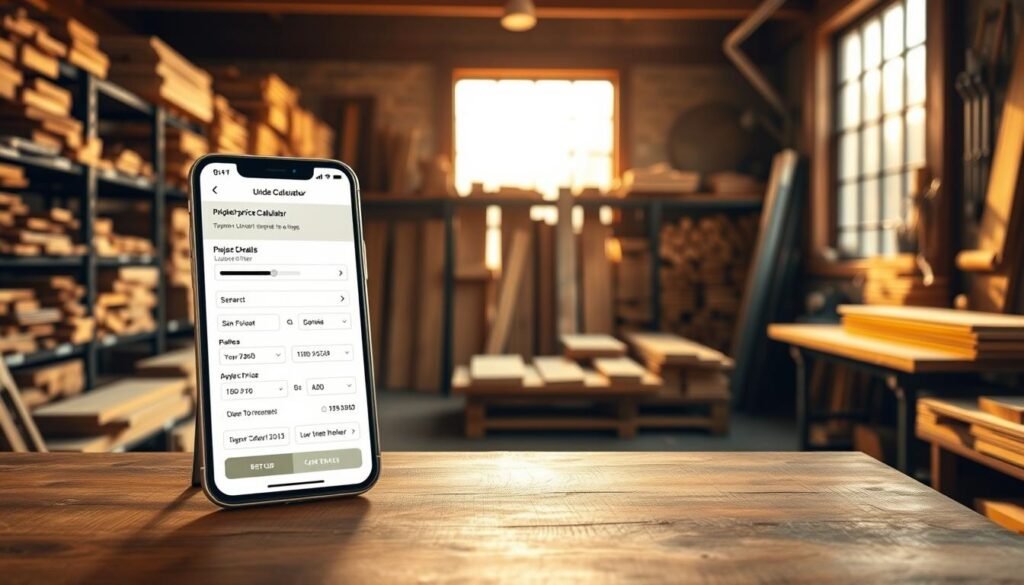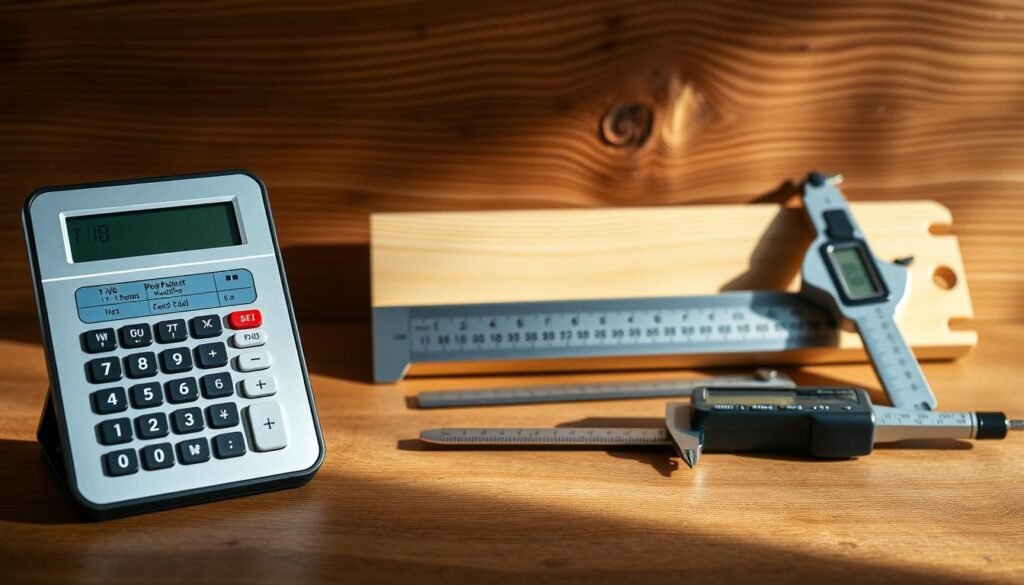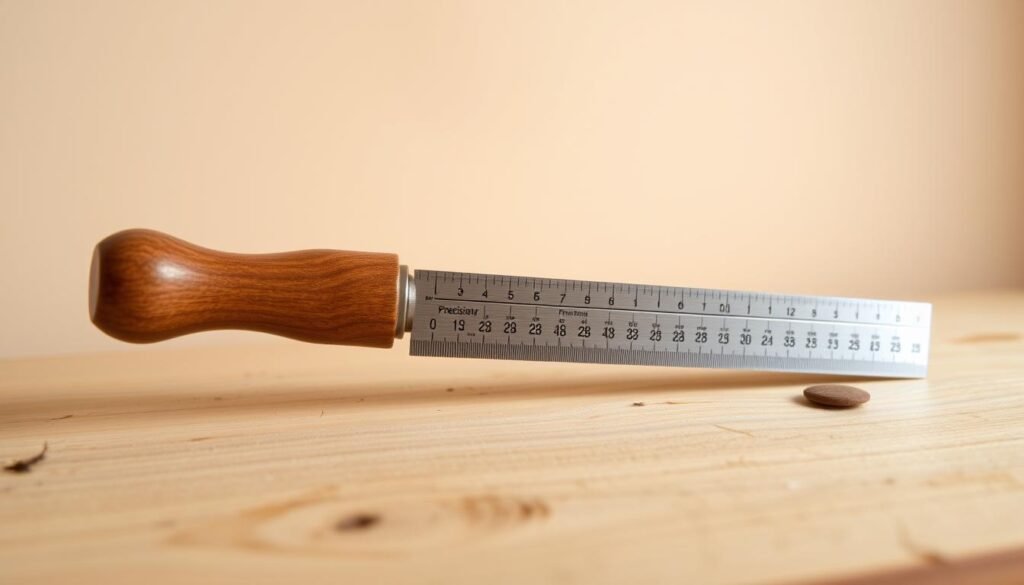Woodworking projects need precise measurements. Fractions can make this hard. Converting fractions to decimals makes things easier, ensuring your woodshop projects are accurate.
fraction conversion table or chart, you can find decimal equivalents fast. This makes your work flow better.
This trick is great for using power tools or making complex designs. It’s all about precision. A quick woodshop conversion chart saves time and cuts down on mistakes. It’s a must-have for both DIY fans and pro woodworkers.
Understanding Measurement Systems in Woodworking
Woodworking measurements have a long history that shapes our work with wood today. The way we measure and convert units has changed a lot. This change affects how precise and efficient our woodworking projects are.
Historical Context of Woodworking Measurements
Woodworking measurements used to be based on the imperial system, which used fractions. This system was easy for some but hard when precision was needed. So, decimal systems were adopted for more accurate measurements.
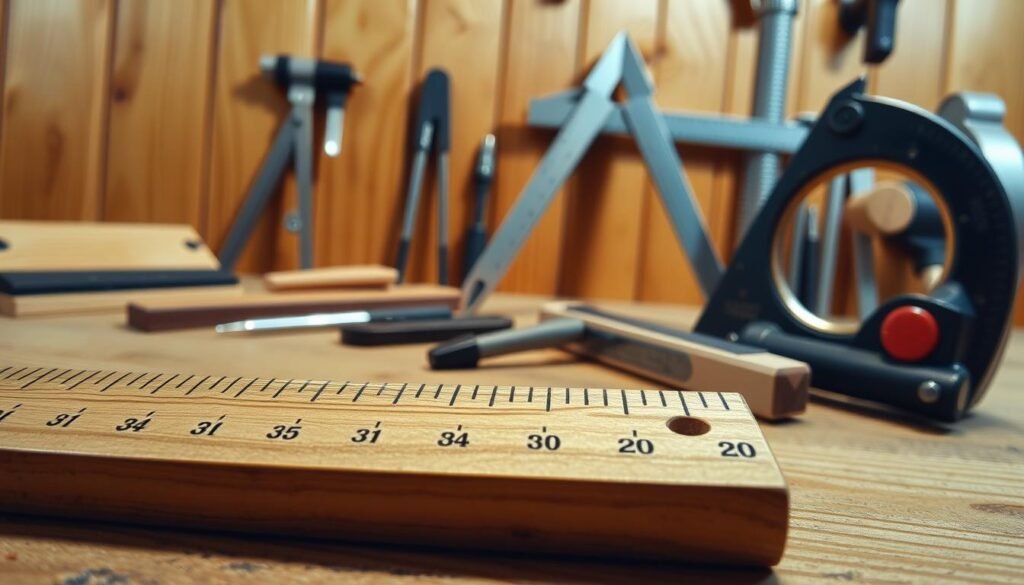
Now, a decimal equivalent chart is a key tool in woodworking. It helps woodworkers switch between fractional and decimal measurements easily. This is very important for projects that need exact measurements, like furniture and cabinetry.
Knowing the history of measurement systems helps woodworkers appreciate today’s tools and techniques more. By using both old and new measurement systems, woodworkers can improve their craft and get better results.
The Basics of Converting Fractions to Decimals
In woodworking, knowing how to quickly change fractions to decimals is key. This skill is essential because many tools and plans use decimal measurements. Yet, some materials and instructions are in fractions.
To turn a fraction into a decimal, just divide the top number by the bottom one. For instance, to change 1/2 to a decimal, divide 1 by 2. This gives you 0.5. You can do this with any fraction.
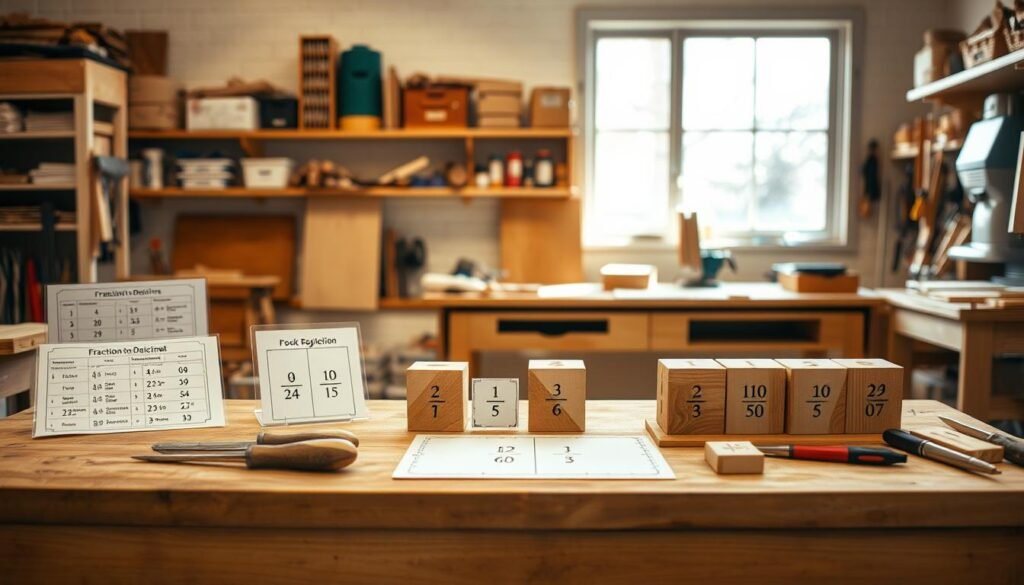
For fractions like 1/4, 1/2, and 3/4, which are often used in woodworking, it’s good to remember their decimal forms. These are 0.25, 0.5, and 0.75, respectively. This makes quick conversions easy without needing a calculator.
Learning the decimal forms of fractions with denominators that are powers of 2 (like 2, 4, 8, 16) is also helpful. These are common in woodworking measurements.
By getting good at these simple conversions and mental math tricks, woodworkers can save time. They also reduce the chance of making mistakes in their projects.
Fractions to Decimals: Quick Woodshop Conversion Chart
A quick woodshop conversion chart is key for woodworkers. It helps make measurement conversions easier. Having one in your workshop can cut down on mistakes and save time.
Woodworkers often convert fractions to decimals for their projects. A handy chart makes this task simpler. It lists common fractions and their decimal forms.
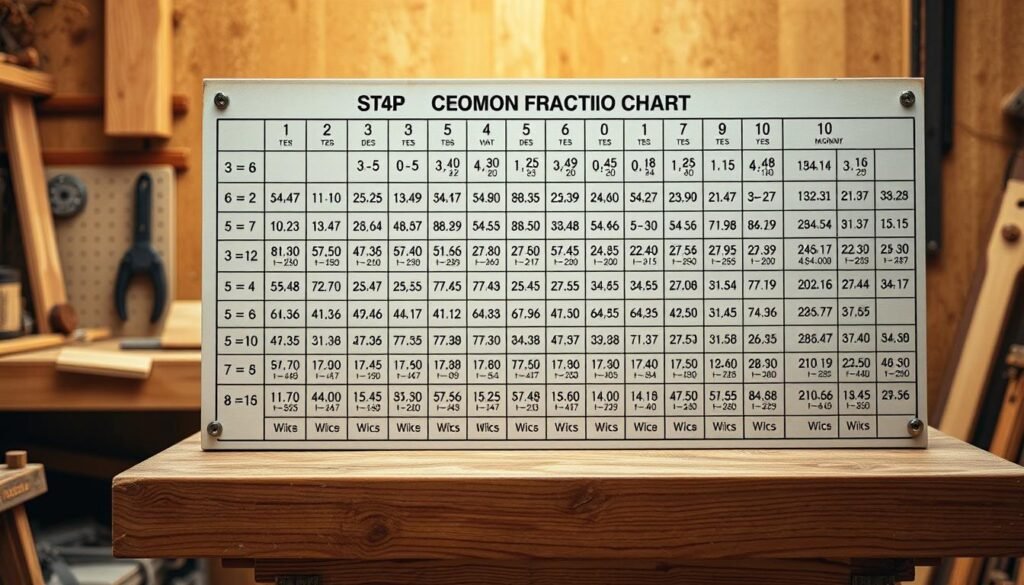
If you like having something physical, there are many online charts to print. These charts are easy to find and print for use in your workshop.
Online woodworking communities and educational sites offer these charts for free. They also include fraction-decimal-percent conversions. This makes them very useful for woodworkers.
Using a quick conversion chart can boost your accuracy and speed. It’s great for both experienced and new woodworkers. Adding a chart to your workflow can make woodworking better.
Essential Fraction-to-Decimal Conversions for Common Measurements
Woodworkers often need to convert fractions to decimals quickly. Knowing these conversions can make your work easier in the workshop.
Woodworking involves many measurements like lengths, widths, and thicknesses of lumber. It also includes angles and diameters of tools and materials. For example, knowing that 1/4 inch is 0.25 inches, or 3/8 inch is 0.375 inches, is very helpful.
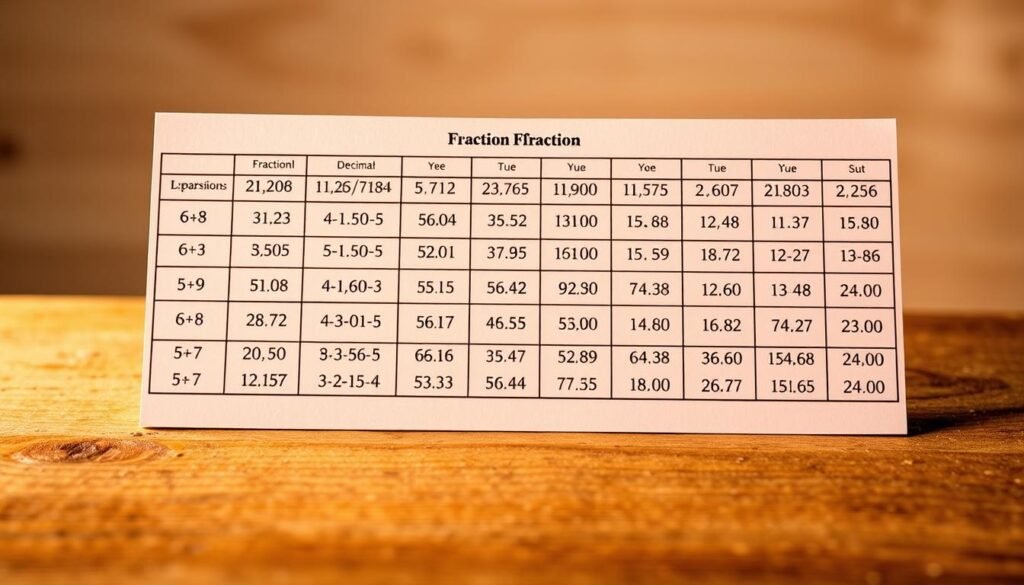
A fraction conversion table or decimal equivalent chart is very useful. Learning these conversions saves time and reduces errors in your projects.
Here are some key conversions to remember:
– 1/16 = 0.0625
– 1/8 = 0.125
– 3/16 = 0.1875
– 1/4 = 0.25
– 3/8 = 0.375
– 1/2 = 0.5
– 5/8 = 0.625
– 3/4 = 0.75
– 7/8 = 0.875
Remembering these fraction-to-decimal conversions improves your efficiency and accuracy. It makes your woodworking projects smoother and more fun.
How to Use Conversion Charts Efficiently in Your Workshop
Learning to use conversion charts is key for woodworkers wanting to work better. With a chart handy, you can switch fractions to decimals fast. This saves time and cuts down on mistakes.
To get the most out of conversion charts, keep them where you can easily find them. You might laminate one and stick it on your workbench or use a digital version on your tablet. This makes it easy to check it whenever you need to.
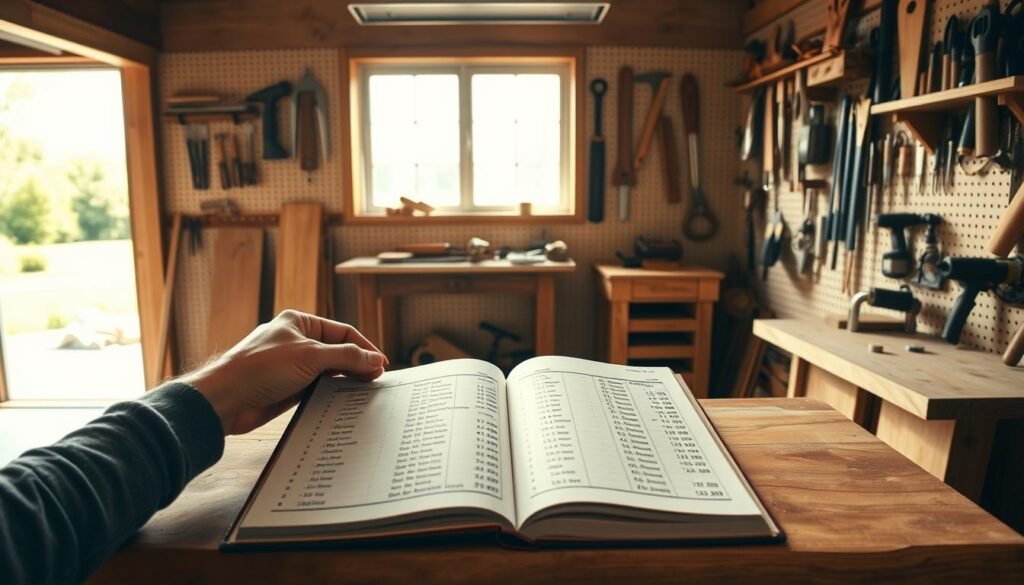
Using conversion charts often helps you remember common conversions. Try making a decimal division worksheet to practice. This will make you better at using charts and boost your woodworking skills.
Adding conversion charts to your daily work makes you more efficient and accurate. This simple tool can really change how well you work and the quality of your projects.
Digital Tools and Apps for Woodshop Measurement Conversions
In today’s world, woodworkers have many tools and apps to help with measurement conversions. These digital tools are becoming more popular in woodworking. They make it easier to change fractions to decimals and do other complex math.
A woodworking conversion calculator is a great tool for woodworkers. You can find these online or as apps on your phone. They let you quickly switch between different measurement units. Some even have extra features like multiplying and dividing decimals.
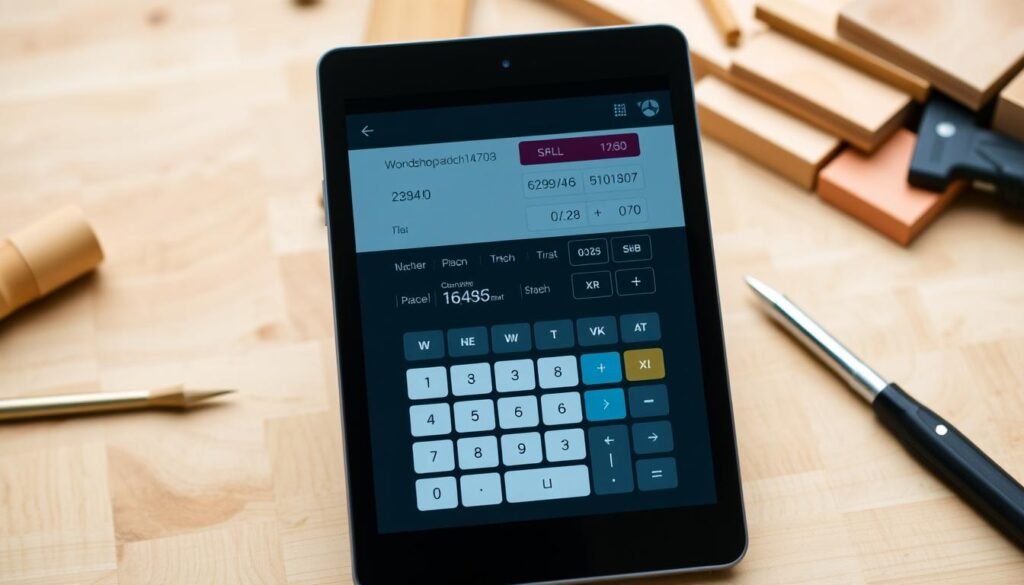
There’s also a dividing decimals anchor chart that you can get online. It’s a quick guide for common decimal changes. It helps woodworkers avoid mistakes in their math.
Using these digital tools and apps can make your work easier and more efficient. They help reduce mistakes and improve your workflow. Whether you’re experienced or new to woodworking, digital tools can really help.
Modern Woodworking Tools and Decimal Requirements
Precision is key in today’s woodworking. Many modern tools need decimal measurements for accuracy. This change to decimal systems is because of the need for more precision in woodworking projects.
Tools like CNC machines and digital calipers need decimal inputs. This means woodworkers must quickly and accurately convert fractions to decimals. If a CNC machine gets the decimal conversion wrong, it can cause big errors in the final product.
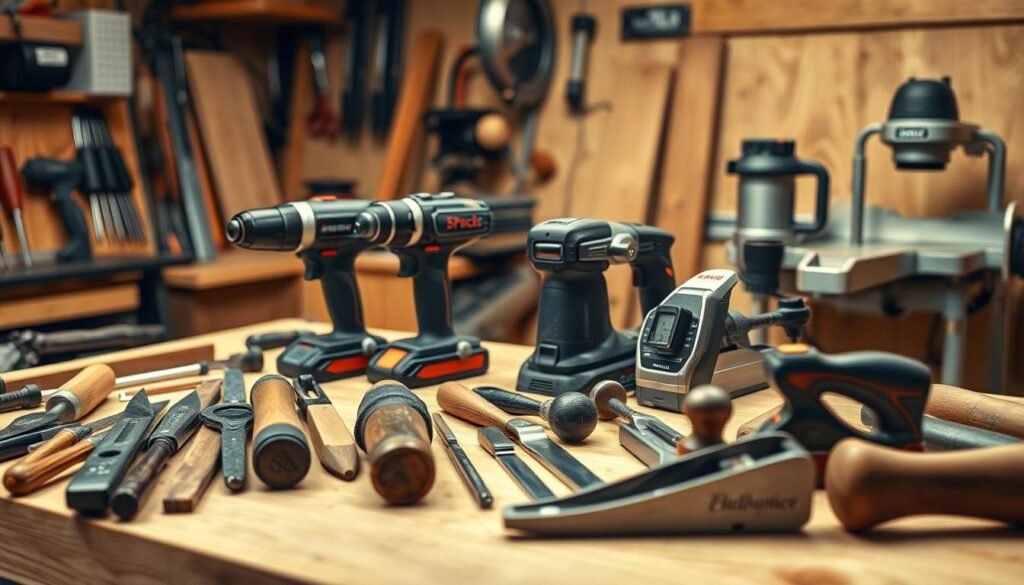
The precision needed in woodworking isn’t just about the tools. It’s also about the skills of the craftsman. Knowing how to convert fractions to decimals is a key skill for achieving the precision needed in modern woodworking.
Mastering decimal conversions helps woodworkers make sure their projects are accurate and of high quality. This is very important in professional settings. Precision is key for safety and meeting project specifications.
In short, being able to work with decimal measurements is vital in modern woodworking. As tools keep getting better, the need for accurate decimal conversions will keep growing.
Practical Applications: When Decimal Measurements Shine in Woodworking
Woodworking projects need exact measurements. Decimal conversions are essential for this precision. They make modern woodworking easier and more accurate.
Decimal measurements are vital for using modern machinery. Tools like CNC machines need decimal values for cuts and shapes. This ensures projects are accurate and consistent.
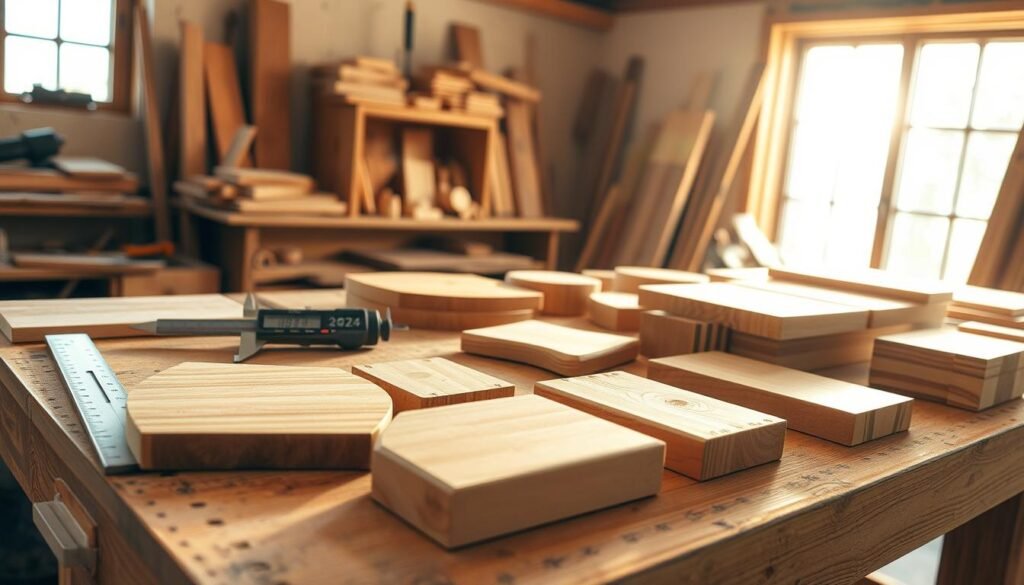
Decimal measurements are also key in complex furniture making. They help with detailed designs and precise joinery. For example, they ensure parts fit perfectly in multi-part projects.
Also, decimal measurements make scaling projects easier. Adjusting designs to different sizes is simpler with decimal conversions. This keeps precision in all dimensions.
In summary, decimal measurements have many uses in woodworking. They improve project quality and precision. Whether with modern tools or detailed furniture, they are essential.
Avoiding Measurement Errors: Common Conversion Mistakes
Getting fractions and decimals right is key in woodworking. But, many mistakes can lead to errors. One big problem is converting fractions to decimals wrong.
When you convert fractions to decimals, remember some have repeating numbers. For example, 1/3 is 0.333… (the dots mean the 3 goes on forever). If you round too soon, you can make big mistakes.
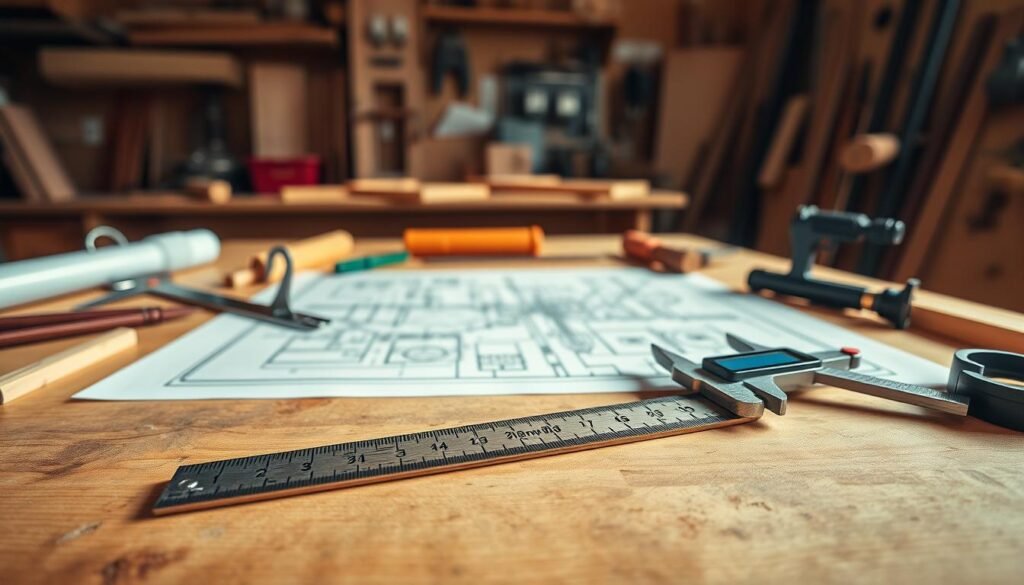
Another mistake is losing precision with decimals. When you add or subtract decimals, make sure the decimal points line up. This helps avoid mistakes.
Woodworkers also need to be careful when switching between units. For example, going from inches to millimeters needs a careful look at the conversion (1 inch = 25.4 millimeters).
Knowing these common mistakes and how to avoid them helps woodworkers get their measurements right. This reduces the chance of errors in their work.
Creating Your Own Custom Conversion References
Creating your own conversion charts is a smart move. It makes sure you have the right measurements ready. Woodworkers can work more smoothly and avoid mistakes with custom charts.
First, list the fractions and decimals you use often. This might be for lumber, joints, or other key parts. Then, make a chart or worksheet with these in fraction and decimal form.
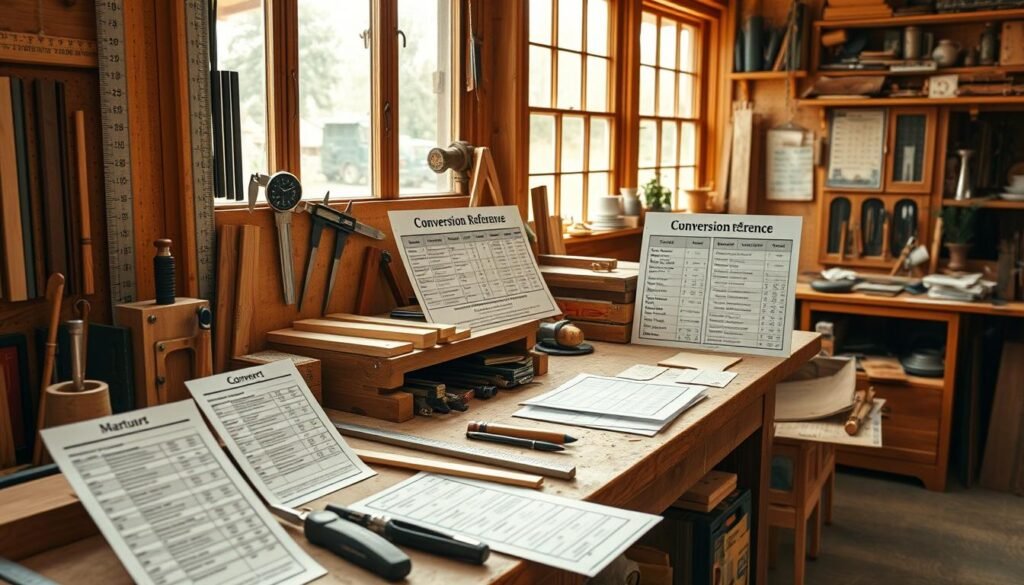
Teachers or those who mentor woodworkers can make special worksheets. Fraction worksheets for 5th-grade students or decimal worksheets for 4th-grade students are great. They help young woodworkers learn about converting measurements.
Having a custom conversion reference saves time and boosts accuracy. It’s very helpful for complex projects or when you need exact measurements.
Using custom conversion references makes woodworking better. It lets you focus more on the creative parts of your projects.
Conclusion: Mastering Measurements for Better Woodworking
Learning to convert fractions to decimals is key for woodworkers. It makes their work more precise and efficient. This skill helps reduce mistakes and boosts the quality of their projects.
Teaching math conversions in woodworking can greatly improve a woodworker’s skills. By using these conversions in real projects, they gain a better grasp of measurement systems. This leads to higher quality woodworking.
As woodworkers practice and get better at converting measurements, they grow more confident. They can handle complex projects with ease. Thanks to this article, woodworkers are on their way to mastering measurements, leading to better results in their work.

